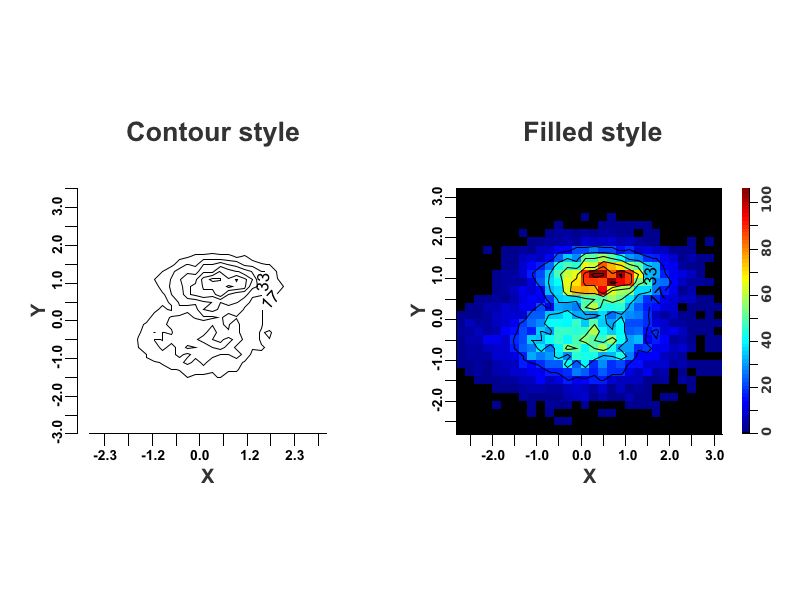DataMelt (formerly Scientific Computation and Visualization Environment (SCaVis), and jHepWork)) is an environment for scientific computation, data analysis and data visualization designed for scientists, engineers and students. The program incorporates many open-source software packages into a coherent interface using the concept of dynamic scripting.
Numerous high-level classes for data manipulation and plotting are written in Java and integrated with Jython scripting language.
Python macros are used to visualize data, 1D and 2D histograms, perform fits, etc. The program includes many tools for interactive scientific plots in 2D and 3D. Data structures and data manipulation methods integrated with Java and the JAIDA FreeHEP libraries combine remarkable power with a very clear syntax.
DataMelt was designed for the front-end data analysis in which program speed is not essential.
Features include:
- Contains a powerful plotting program to display data (including 3D plots) with a large choice for interactive labels and text attributes (subscripts, superscripts, overlines, arrows, Greek symbols etc.):
- 2D and 3D interactive visualization of data, functions, histograms, charts.
- Histograms in 2D and 3D, as well as profile histograms.
- Matrix algebra.
- Random numbers and statistical samples.
- Functions, including parametric equations in 3D.
- Contour plots, scatter plots.
- Neural networks.
- Linear regression and curve fitting.
- Clustering analysis K-means clustering analysis (single and multi pass), Fuzzy (C-means) algorithm, agglomerative hierarchical clustering).
- Cellular automation.
- Input/output for all data objects (arrays, functions, histograms) are based on Java serialization.
- Output to high-quality Vector graphics. Support for PostScript, EPS, PDF and raster formats.
- Has a full-featured integrated development environment (IDE) with syntax highlighting, syntax checker, code completion, code analyser, a Jython shell and a file manager.
- Based on Jython, an implementation of the high-level language Python written in Java.
- Includes numerical Java libraries integrated with a graphical user interface for data manipulation.
- Data structures and data manipulation methods, integrated with Java and JAIDA classes, combines remarkable power with very clear syntax. jHepWork includes high-level data types for manipulations, calculations of systematical errors and visualization (plots, tables, spreadsheet, file input/output) which have no analogy in other data analysis frameworks.
- Enhanced console for BeanShell and Jython with syntax highlighting and built-in macro language for custom commands. Macros based on the jEdit textArea can be reused.
- Many mathematical and physics libraries are linked automatically. Fully compatible with FreeHEP libraries for data manipulation, histograms and fits.
- Comprehensive. More than 10 thousand classes and methods are packed in 27 MB (this excludes those from the native Java API). Most libraries were designed for data analysis and mathematical operations.
- Native Java I/O based on serialization. Platform-neutral file formats based on XML and compressed Google’s Protocol Buffers records.
- Professional graphics. Output to the vector format (PostScript, EPS) and other formats (PDF, PNG, JPG, etc).
- Seamlessly integrated with Java-based Linear Collider Detector (LCD) software concept.
- Includes a help system with a code completion based on the Java reflection technology.
- Multi-platform.
Website: datamelt.org
Support: Documentation
Developer: S. Chekanov
License: GNU General Public License v2.0

DataMelt is written in Java. Learn Java with our recommended free books and free tutorials.
Return to Plotting Tools | Return to Data Mining
| Popular series | |
|---|---|
| The largest compilation of the best free and open source software in the universe. Each article is supplied with a legendary ratings chart helping you to make informed decisions. | |
| Hundreds of in-depth reviews offering our unbiased and expert opinion on software. We offer helpful and impartial information. | |
| The Big List of Active Linux Distros is a large compilation of actively developed Linux distributions. | |
| Replace proprietary software with open source alternatives: Google, Microsoft, Apple, Adobe, IBM, Autodesk, Oracle, Atlassian, Corel, Cisco, Intuit, and SAS. | |
| Awesome Free Linux Games Tools showcases a series of tools that making gaming on Linux a more pleasurable experience. This is a new series. | |
| Machine Learning explores practical applications of machine learning and deep learning from a Linux perspective. We've written reviews of more than 40 self-hosted apps. All are free and open source. | |
| New to Linux? Read our Linux for Starters series. We start right at the basics and teach you everything you need to know to get started with Linux. | |
| Alternatives to popular CLI tools showcases essential tools that are modern replacements for core Linux utilities. | |
| Essential Linux system tools focuses on small, indispensable utilities, useful for system administrators as well as regular users. | |
| Linux utilities to maximise your productivity. Small, indispensable tools, useful for anyone running a Linux machine. | |
| Surveys popular streaming services from a Linux perspective: Amazon Music Unlimited, Myuzi, Spotify, Deezer, Tidal. | |
| Saving Money with Linux looks at how you can reduce your energy bills running Linux. | |
| Home computers became commonplace in the 1980s. Emulate home computers including the Commodore 64, Amiga, Atari ST, ZX81, Amstrad CPC, and ZX Spectrum. | |
| Now and Then examines how promising open source software fared over the years. It can be a bumpy ride. | |
| Linux at Home looks at a range of home activities where Linux can play its part, making the most of our time at home, keeping active and engaged. | |
| Linux Candy reveals the lighter side of Linux. Have some fun and escape from the daily drudgery. | |
| Getting Started with Docker helps you master Docker, a set of platform as a service products that delivers software in packages called containers. | |
| Best Free Android Apps. We showcase free Android apps that are definitely worth downloading. There's a strict eligibility criteria for inclusion in this series. | |
| These best free books accelerate your learning of every programming language. Learn a new language today! | |
| These free tutorials offer the perfect tonic to our free programming books series. | |
| Linux Around The World showcases usergroups that are relevant to Linux enthusiasts. Great ways to meet up with fellow enthusiasts. | |
| Stars and Stripes is an occasional series looking at the impact of Linux in the USA. | |

I very recommend DataMelt for scientific data analysis and visualization. It supports Groovy, the fastest dynamically-typed language. It also has a massive number of example to get started